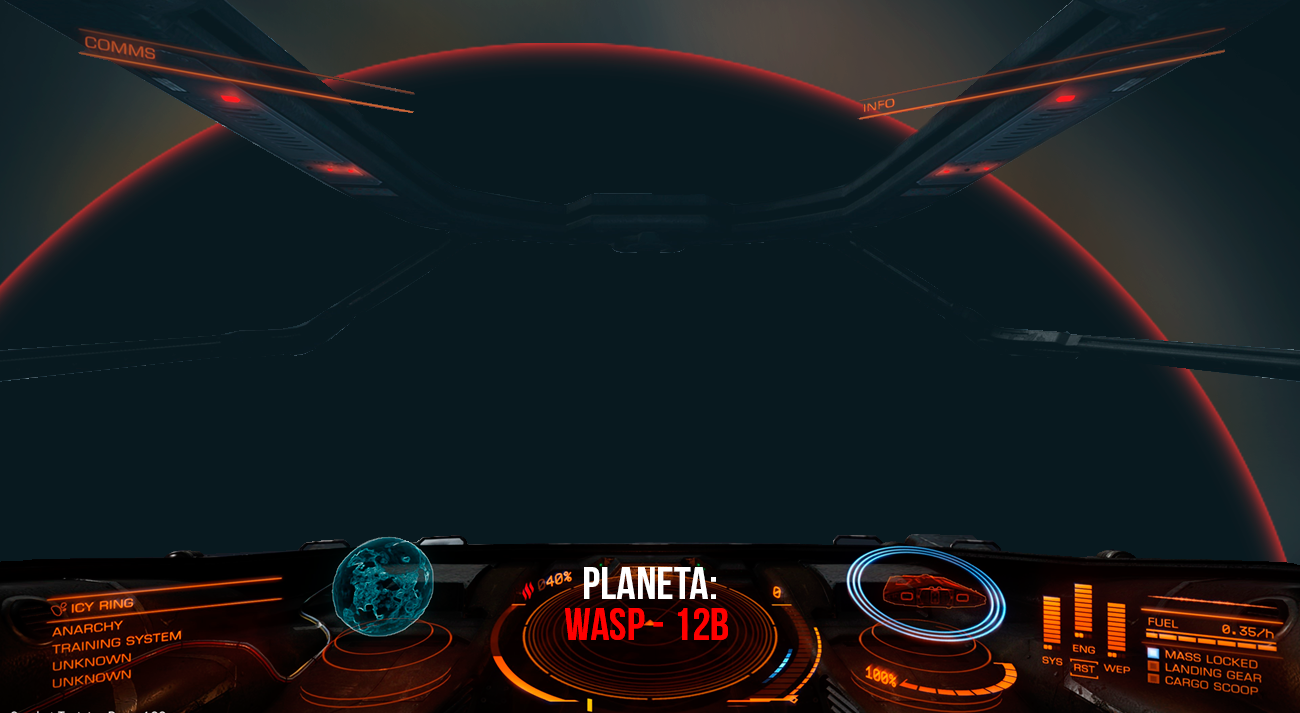An extremely dark exoplanet: WASP-12b
There is a huge amount of exoplanets scattered throughout our galaxy, the Milky Way. For those who do not know the term exoplanet, it refers to all the planets that exist beyond the Solar System.
Great planets, small, very cold, extremely hot, gas giants much larger than Jupiter, even those known as super-stars. There is a huge variety of exoplanets discovered to date scattered throughout the galaxy and the universe.
However, this time we will visit an exoplanet known as WASP-12b. It is an extremely dark planet that is being literally devoured by its star.
What do you think if we take a trip with our imaginary ship to WASP-12b?
Another adventure for the universe is about to begin ...
¡Let's go there!
"Imagination is good for traveling and costs less." George William Curtis - (1824-1892) Writer and American speaker.
There is an abysmal amount of exoplanets scattered throughout the universe. Sometimes, when I look at the stars and see those distant points, I imagine what the worlds that belong to those stars would look like:
What characteristics will they have? What colors are they? ... endless questions and of course, all the way to the million dollar question: Will there be life in any of them?
The truth is that among many discoveries, there is a place that is extremely curious called WASP-12B and making use of our faithful ship will break any limit and travel there to learn about this distant world.
Motors in motion ... ¡let's goooooooooooo!

All right. We are already moving through space, moving at high speeds. The road we are going to cover will be 870 light years until we can arrive.
At this distance, is in the constellation of Auriga, the star WASP-12 that in fact is very similar to our Sun, although larger. (57% larger)
WASP? Why this strange name?
Well, actually WASP comes from the acronym: Wide Angle Search for Planets, which translated into Spanish would be: Wide Angle Search of Planets. It is an automated project that is responsible for the search of exoplanets through the astronomical transit method. (We'll see what this is about in the following post :D).

As we move through the cosmos, we will see what we can find when we arrive. Let's consult our supercomputer to see what data it can throw us on WASP-12B.
...
It's interesting WASP 12-B is an exoplanet larger than Jupiter. Here is an image that is shown on screen:

The most curious of all, is that we are shown a totally black planet.
Hmm? I think we're about to find out, we're reaching the WASP-12 star.

According to the data that begins to throw us the computer, tells us that this star can be approximately 2000 million years old. On the other hand, it has a luminosity 3.5 times higher than that of our Sun.
Apparently, this star only has WASP-12b as a planetary companion. The truth is that if we were to explore this stellar system, maybe we will discover more planets but our mission at the moment is to visit WASP-12b.
It's amazing, more data on screen about this exoplanet, let's see:
A WASP-12b, is known as a hot Jupiter and is at a distance from its star of only 0.023 AU that friends, KM would be about 3 million km and in space that distance is relatively short for a planet and its star.
Let's get an idea, Mercury, which is the planet closest to the Sun, is at a distance of 0.4 AU that would be about 59 million km, for the 3 million km that is WASP-12b of its star.
And yes, that distance greatly influences its temperature. Since this planet records temperatures of 2500 Kelvin approx. That if we take it to celcius degrees would be about 2200 degrees, being one of the hottest planets discovered so far.
An atrocity!
The amount of radiation that planet must receive from its star must be brutal!

What a brutal scene we are seeing friends!
We are witnessing live, as a star is devouring your planet
We can even see how hot the planet is, it shines with a reddish color as if it were a huge piece of burning coal. It also gets a lot of attention that this planet is totally black.
Let's get closer a little more. We will have to be careful because of the high temperatures.

Why is this planet black? it seems as if it were the home planet of a race of super dangerous and grotesque aliens, do not you think?
More information about this planet appears on the supercomputer:
We see that this planet has an orbit around its extremely fast star, completing it only in a terrestrial day! That is, the years here last only 1 day.
WOW! More data!
We see that its atmosphere is composed mostly of carbon.
Another interesting fact about this planet is that instead of reflecting the light of its star, as do the planets in our solar system, WASP-12b absorbs it, up to 94% of the light absorbs it. . Reason why this planet is totally black.
On the other hand, its parent star is uprooting huge amounts of mass to the planet, at a rate of 6000 million tons per second (a rather bloodthirsty mother if we see a certain way)
If we continue to lose such mass amounts at that rate, it is estimated that the planet can be destroyed in a period of 10 million years, which at the cosmic level is a mere blink.
What a strange planet but at the same time so fascinating you are ... WASP-12b.
It's time to go home ...

How fascinating can the universe be? Do not you think?
This experience by WASP-12b only makes me think that scattered throughout the galaxy, for every star in the universe, there are planets with unique and fascinating characteristics. WASP-12b is a clear example of the great variety of worlds that exist.
It's time to go back to our little blue dot, it's time to go home. Undoubtedly my favorite place in the whole universe.
And remember ... Whenever you can, look at the stars.
We'll see you in the next post, friends!